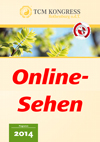Placing Applied Channel Theory at the Core of Acupuncture Part 1 Video
Angewandte Leitbahntheorie
- ISBN: S24365
- 2014, video, 309 min.
49,00 € – 57,00 €
incl. VAT
plus shipping costs
Depending on the delivery address VAT may vary at checkout.
Delivery time: immediately available
Video preview (5 minute extract)
Description
Teil 1 des 3-teiligen Vortrags part 1 of 3 parts:
Wang Ju-Yi questions what meridians are and where they are. Scientifically they could not be evaluated. Earlier studies tried to explain that all meridians are neural-, vascular, lymphatic or harmonic structures, but this could not be confirmed. Wang Ju-Yi explains the danger that acupuncture is only used for pain treatment and his deeper meaning is going lost and therefore the clinic result develops negatively.
Wang Yu-Ji explains that scientist tried to explore the meridians at corpses, but after death they no longer exists. Also if the patient is sick the meridians are irregularly, this can be shown by palpitation the meridians. In his speech Wang Yu Ji shows us how to palpitate and how to regulate them. This works on a soft and respectful way, like a violin player and not a drummer. He also explains the meaning of the San Jiao (triple burner), which is like a layer on the other organs.
He explains the importance of source points and the separation of the acupuncture points in about 365 points into fire, water, earth, metal, wood and his indications, like the depth of needling, the effectiveness and the combination possibilities. Wang Ju-Yi shows us that we have to know about 150 acupuncture points by heart and that we have to know where the muscles, ligaments, vessels and tendons are. One very important point for Wang Ju-Yi is the palpation of points before needling.
Very informative case studies gives you an effective insight for treatment.
Wang Ju-Yi hinterfragt, was die Meridiane sind und wo diese liegen? Wissenschaftlich konnten die Meridiane noch nicht nachgewiesen werden. Frühere Studien versuchten zu erklären, dass Meridiane Nervenleitbahnen sind, die auf vaskulären- lymphatischen- oder hormonellen Systemen beruhen. Dies konnte allerdings nicht bestätigt werden. Wang Ju-Yi erläutert die Gefahr, dass Akupunktur nur zur Schmerzbehandlung verwendet wird, da seine tiefere Bedeutung oft verloren geht und dadurch das klinische Ergebnis negativ ausfällt.
Wang Ju-Yi erklärt, dass Wissenschaftler versucht haben bei Kadavern die Meridiane zu entdecken, diese aber nach dem Tod nicht mehr vorhanden sind. Auch bei Erkrankungen des Menschen zeigen Meridiane Unregelmäßigkeiten auf, dies kann durch das Palpieren der Meridiane gezeigt werden. In diesem Vortrag zeigt uns Wang Ju-Yi wie das Palpieren von statten geht und wie über die Meridiane Fülle und Leere reguliert werden kann. Dies funktioniert auf sehr sanfte und respektvolle Weise, etwa wie ein Geigenspieler und nicht wie bei einem Schlagzeuger. Außerdem erläutert er die Bedeutung des San Jiao (Dreifacher Erwärmer), welcher wie eine Hülle um die anderen Organe liegt.
Er erläutert die Bedeutung der Quellpunkte und die Aufteilung der Akupunkturpunkte in ca. 365 Punkte in Feuer, Wasser, Erde, Metall, Holzpunkte und seine Anwendungstechniken, wie die Tiefe der Nadelung, deren Wirkungsweise und Kombinationsmöglichkeiten. Wang Ju-Yi zeigt uns, dass diese 150 Hauptpunkte wirklich beherrscht werden sollten und die Muskeln, Bänder, Gefäße und Sehnen besondere Berücksichtigung erhalten sollten. Ein sehr wichtiger Stellenwert hat für Wang Ju-Yi das Palpieren der Punkte bevor genadelt wird.
Anschauliche praktische Fallbeispiele von Jason Robertson runden das Seminar sehr effektiv ab.
TCM Kongress Rothenburg 2014,
video, 309 min., chinesisch + englisch,
Languages: Chinese and English.
Author
Product safety


